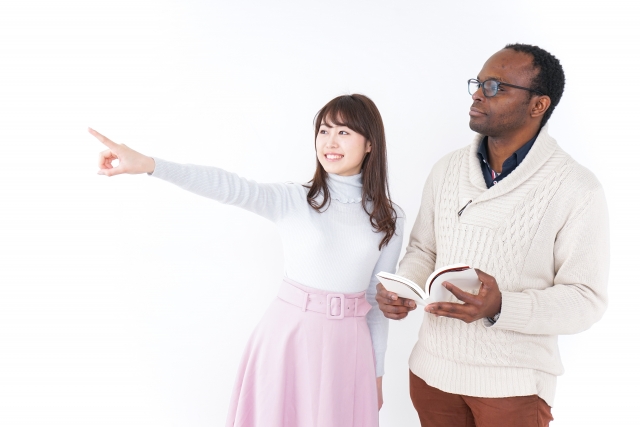INDEX
Japan's unique communication style—which values modesty as a virtue, avoids direct expressions, and assigns meaning to silence—has surprised foreigners while functioning as wisdom for smoothly conducting business and maintaining relationships.
In recent years, however, waves of change have gradually begun to affect this traditional communication style.
Globalization, the spread of social media, work-style reforms, and changing values among younger generations—various factors are bringing fresh perspectives to how Japanese people speak and listen.
Saying "I only speak a little English" while speaking fluently, saying "We'll consider it" when actually declining, or "Let's meet again" being merely social courtesy...
While many foreigners are confused by these "gaps between words and true feelings," we Japanese ourselves have begun questioning this ambiguity.
This article explores the characteristics of Japan's unique communication culture and the signs of its transformation.
Five Characteristics of Japanese Communication Style
Let's examine the curious characteristics of Japanese communication styles that differ from those found overseas, breaking them down into five distinct perspectives.
1. Hierarchical Communication
Japanese people significantly alter their communication style based on differences in age, status, and position.
From childhood, they are taught to use honorific language (keigo) with elders, a habit that continues throughout their lives. In school life, especially in extracurricular activities, senior-junior relationships are strictly maintained with clear distinctions in language and behavior.
As adults, these hierarchical relationships become more complex, requiring different levels of polite language depending on workplace positions and titles. It's common to use formal honorific language with superiors while adopting different speaking styles with colleagues and subordinates.
This hierarchy-based communication plays an important role in maintaining social order in Japanese society.
2. Relationship-Based Communication
Japanese people significantly change their communication style depending on the relationship with their conversation partner.
With family, childhood friends, and close friends, conversations are casual and include jokes and intimate communication.
In contrast, conversations with new acquaintances or in public settings involve polite language, restrained emotional expression, and more distance.
Japanese culture has a clear distinction between "uchi" (inside/in-group) and "soto" (outside/out-group), resulting in different approaches to people within one's group versus outsiders.
While outwardly polite to foreigners, Japanese people may distinguish between "honne" (true feelings) and "tatemae" (public facade), sometimes creating a difference between their stated positions and true feelings.
This relationship-based communication variation is a cultural characteristic that helps maintain harmony within groups while keeping appropriate distance with outsiders.
3. Indirect Communication
Japanese communication tends to avoid direct statements and emotional expressions.
The structure of conversations is distinctive, often beginning with premises and contextual information before stating the conclusion at the end—a "conclusion-last" approach.
When expressing negative opinions, Japanese often begin with "sumimasen" (I'm sorry) and avoid direct expressions, using vague phrases like "it might be difficult" or "I'll consider it."
This approach aims to avoid confrontation and preserve relationships, relating to the uniquely Japanese concept of "reading the air" (kuuki wo yomu).
Such indirect communication is an important means of respecting others' feelings and maintaining smooth relationships in Japanese culture, which values group harmony.
4. High-Context Communication Using Non-Verbal Cues
Japanese culture tends to avoid excessive talking and values appropriate silence.
As exemplified by the belief that "silence is golden," ideal communication often requires minimal verbalization, with silence itself carrying various meanings depending on context—it may indicate agreement, consideration, or refusal.
Non-verbal communication tools are abundant, with nodding, bowing, and verbal acknowledgments ("hai," "naruhodo") playing crucial roles in conversations.
"Aizuchi" (verbal nodding) serves the important function of signaling to speakers that one is listening.
This high-context communication style emphasizes understanding situations and context beyond words, reflecting the Japanese cultural ideal of "ishin-denshin" (heart-to-heart communication without words).
5. Gender-Differentiated Communication
Traditional Japanese communication styles show marked differences between genders.
Women tend to prioritize dialogue and emotional sharing, using empathetic responses and frequent verbal acknowledgments. In formal settings, women may be expected to use feminine-specific polite language (joseigo).
Men, especially in older generations, tend to suppress emotional expression and communicate with minimal words.
This is partly attributed to the influence of Samurai spirit, which considers silence a virtue and doesn't necessarily view excessive emotional expression or talking as positive.
In recent years, these gender differences have gradually diminished with social changes, but such gender-based linguistic behaviors are still observed, particularly in formal settings and among older generations.
Specific Examples of Japanese Communication Styles That Confuse Foreigners
Now that we understand the characteristics of Japanese communication style, let's look at specific examples of uniquely Japanese communication that often leave foreigners wondering "Why?"
"I only speak a little English" - but then speaks fluently

American Kevin asked Tanaka-san, "How well do you speak English?" during a business meeting in Tokyo.
Tanaka-san modestly replied, "I only speak a little English," but then proceeded to deliver a presentation in fluent English and accurately answered complex questions.
Kevin was confused by the gap between the initial "just a little" claim and Tanaka-san's actual high English proficiency.
The reason
This reflects the Japanese cultural concept that "a skilled hawk hides its talons."
In Japanese society, it's considered virtuous to downplay one's abilities, while overly confident attitudes may be perceived as "boastful" and lead to negative evaluations.
There's also the psychological desire to avoid the embarrassment that would come from failing to meet expectations if one claims to be capable.
Furthermore, in a culture that values group harmony, behaving modestly to avoid standing out is highly valued.
"We'll consider it" in a meeting - followed by silence

Canadian Sarah proposed a new marketing strategy during a project meeting at the Tokyo office.
The Japanese department head politely responded, "Thank you for your proposal. We will consider it," but two weeks passed without any follow-up.
When Sarah asked a colleague about it, she was told, "That response was essentially a rejection," which left her confused.
The reason
In Japanese business culture, there's a strong tendency to avoid direct negation or refusal.
Ambiguous expressions like "We'll consider it" or "We'll be in touch" often function as diplomatic ways of saying "No."
Subtle reactions during meetings—slight silences, vague questions, lack of enthusiasm—are often understood among Japanese people as signs of rejection.
This indirect communication stems from a desire to preserve the other person's face and maintain a harmonious atmosphere.
For foreigners, reading this "unspoken rejection" can be difficult and leads to confusion.
No questions asked during the Q&A portion of company meetings

Soon after German Thomas began working at a Japanese company, he attended a general meeting.
After the presentation, the moderator asked, "Are there any questions?" but the meeting room fell silent, with no one raising their hand.
Thomas had several points he wanted to clarify but hesitated when he saw his colleagues remaining quiet.
After the meeting, when he asked a colleague, "Why didn't anyone ask questions?" he was told, "Everyone will ask individually later."
The reason
This situation reflects Japanese group consciousness. Many Japanese people tend to think, "Would my question be inconveniencing everyone by taking up time?"
Additionally, asking questions publicly can sometimes suggest that "the speaker's explanation was insufficient," potentially hurting the presenter's face.
There's also fear of revealing one's own ignorance by asking something they "should" understand.
As a result, questions are typically asked later in private or in small groups. While this may seem inefficient to foreigners, it's a cultural characteristic that prioritizes group harmony.
Only managers and senior employees dominate conversation at company drinking parties

French Sophie attended a welcome party at her Japanese company.
She expected lively discussion and interaction among everyone, but instead found that the department head and senior employees dominated most of the conversation while younger employees remained mostly silent, just listening.
When Sophie tried to engage the younger staff, they gave brief responses without actively joining the conversation.
Sophie wondered, "Why doesn't everyone share their opinions?"
The reason
This phenomenon reflects Japan's hierarchical communication structure.
Japanese society emphasizes seniority and status-based relationships, where younger staff and subordinates are expected to respectfully listen to their supervisors and seniors.
This tendency is especially pronounced in formal and semi-formal settings like drinking parties.
Younger employees, mindful that "the nail that sticks out gets hammered down," keep their opinions modest and focus on reading the room while nodding in agreement to their superiors' talk.
While this may appear to be one-way communication to foreigners, in Japanese culture, "listening" is considered an important part of communication.
"Let's meet again soon" said with a smile - but no future meeting ever happens

Italian Marco spent an enjoyable time with a group of Japanese people he met during his trip to Japan.
When parting, they smiled and said, "Let's meet again soon! Next time, we'll treat you to Italian food."
Marco genuinely looked forward to this promise, but when he tried to follow up, the responses were vague, and they never actually met again.
This is a typical example of "social courtesy" in Japanese culture. Expressions like "Let's meet again" or "Let's have dinner sometime" often function as ritual phrases to smooth over partings rather than concrete promises.
Japanese people can usually judge whether something is an actual promise or mere social courtesy from the way it's said and the context, but this distinction is difficult for foreigners to grasp.
Japanese culture tends to distinguish between "honne" (true feelings) and "tatemae" (socially desirable expressions), and avoiding direct refusals to prevent hurting others is considered virtuous.
Ambiguous time expressions like "someday," "eventually," or "next time" are often used to maintain good relationships rather than to make actual commitments.
Changing Japanese Communication Styles
Traditional Japanese communication styles that have been established in Japanese society for generations are gradually experiencing waves of change.
Characteristic Japanese communication patterns such as the "culture of inference" and the distinction between "honne and tatemae" (true feelings versus public face) are slowly transforming with the times.
Among Japanese people themselves, questions about the conventional indirect and roundabout communication styles are increasing.
Questions like "Shouldn't we be more assertive?" and "Is suppressing individuality really right?" are spreading, especially among younger generations.
The rise of social media, which has enhanced individuals' ability to express themselves, is also propelling this change.
In contemporary society, where people with diverse values coexist, the assumption that "others should understand without explicit communication" has become less practical, leading to a reevaluation of the importance of clear verbal expression.
Additionally, the increase in foreign workers and tourists, as well as experience working in global companies, has brought changes to Japanese communication.
In international business environments, ambiguous expressions and indirect negations often cause confusion, creating demand for more direct and clear expressions of intent.
Phrases like "We'll consider it" are frequently not understood as implicit rejections, necessitating reconciliation with cultures that value clear Yes/No communication.
Among younger generations especially, resistance to strict linguistic distinctions based on age and position is growing.
In the IT industry and startups, there's an increasing trend valuing ability and contribution over seniority, with more companies aiming for flatter communication structures.
The spread of remote work has increased text-based interactions, fostering a preference for clearer and more direct expressions.
Nevertheless, these changes aren't completely replacing traditional Japanese communication styles but rather evolving into a situation-dependent approach.
In formal settings, polite language and indirect expressions remain important, while more direct communication is increasing in private settings and online spaces.
Many Japanese people are developing the flexibility to use different communication styles depending on the situation and the person they're talking to, seeking a balance between the traditional value of "harmony" and the "self-expression" demanded by modern society.
My Thougts on Japanese Communication Styles
I too have experienced moments of surprise when going abroad and realizing just how different Japanese communication styles are from those in other countries.
Learning through conversations with foreigners that "it's okay to communicate more directly" and "it's okay to express emotions more openly" brought positive changes to my own communication style, which has been a welcome development.
At the same time, I feel that the Japanese communication characteristic of "being considerate of others' situations without necessarily verbalizing it" is something I hope will continue far into the future.
I believe Japanese people possess the ability to naturally sense what others want by reading their silence and facial expressions—whether shopping in stores, riding trains, or talking with friends.
This allows for smooth communication and the understanding of others' situations to offer help when needed.
However, as Japan's economy stagnates and gradually loses influence, it's certain that we will face demands for greater changes, whether we want them or not.
Even now, if traditional communication styles create barriers in business, the need for more direct communication and straightforward delivery of conclusions is increasing.
I believe that while keeping the flame of consideration alive, Japanese people will increasingly need to develop communication styles that don't distinguish so rigidly between "inside" and "outside" groups.

Author : Katsu
Born and raised in Japan. After traveling solo to various countries starting at age 20, I was shocked to discover how peculiar Japanese culture and thinking appeared from a global perspective. Now I find these differences fascinating and want to incorporate new cultural perspectives and ways of thinking.
RELATED ARTICLES
Got questions about how Japanese think, act, or some of Japan’s quirky cultural habits? No matter how big or small—drop your thoughts in the comments below!

